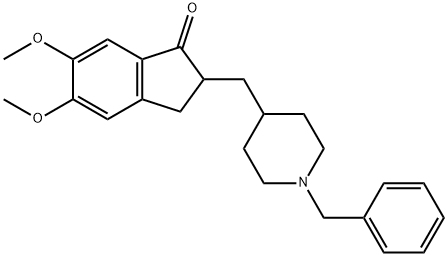ROLIPRAM
Synonym(s):4-[3-(Cyclopentyloxy)-4-methoxyphenyl]-2-pyrrolidinone;Rolipram - CAS 61413-54-5 - Calbiochem;ZK 62711
- CAS NO.:61413-54-5
- Empirical Formula: C16H21NO3
- Molecular Weight: 275.34
- MDL number: MFCD00270906
- EINECS: 262-771-1
- SAFETY DATA SHEET (SDS)
- Update Date: 2024-11-19 20:33:22

What is ROLIPRAM?
Description
Rolipram (61413-54-5) is a selective inhibitor of cAMP-specific phosphodiesterase (PDE4), IC50 = 1 μM. Displays beneficial effects in neurodegenerative diseases. Rolipram also displays anti-inflammatory activity and synergizes with forskolin (cat.# 10-2073). Cell permeable.
Description
Rolipram, a selective phosphodiesterase-4 inhibitor, was originally developed by Schering as an antidepressant in the 1990s. Although it was a prototype for some drugs developed later, Schering abandoned it because its effective dosage caused significant adverse side effects.
But rolipram isn’t without merit. It was soon discovered that it can accelerate proteasomes’ activity for disposing of toxic protein aggregates that lead to neurodegenerative diseases.
The misfolded tau protein is the aggregate associated with Alzheimer’s disease. Recently, studies by Natura Myeku and co-workers at Columbia University (New York) showed that tau may responsible for attacking proteasomes and disrupting their activity. They then found that when rolipram is administered to mice that were engineered to generate a tau protein, the drug?increases proteasome activity, depresses aggregate formation, and improves the animals’ spatial memory.
Chemical properties
Yellowish solid
The Uses of ROLIPRAM
(±)-Rolipram is a cAMP-specific phosphodiesterase 4 (PDE4) inhibitor.
The Uses of ROLIPRAM
antipsychotic
The Uses of ROLIPRAM
A selective, cell permeable inhibitor of cAMP-specific phosphodiesterase (PDE4).
The Uses of ROLIPRAM
Pharmacological tool for characterization of phosphodiesterase isoenzymes.
What are the applications of Application
Rolipram is a selective, cell permeable inhibitor of cAMP-specific phosphodiesterase (PDE4)
Definition
ChEBI: Rolipram is a member of the lclass of pyrrolidin-2-ones that is pyrrolidin-2-one bearing a 3-(cyclopentyloxy)-4-methoxyphenyl substituent at the 4-position. It is a type IV-specific phosphodiesterase (PDE4) inhibitor. It has a role as an antidepressant and an EC 3.1.4.* (phosphoric diester hydrolase) inhibitor.
General Description
A cell-permeable, selective inhibitor of cAMP-specific phosphodiesterase (PDE IV; IC50 = 800 nM). A rolipram-insensitive PDE IV subtype is also known to exist. Also inhibits NF-κB and NFAT activation in Jurkat and primary T cells.
Biological Activity
Selective inhibitor of cAMP phosphodiesterase (PDE4) (IC 50 = 2.0 μ M). Discriminates between two conformational states of PDE4 isoenzymes. See separate isomers ((R)-(-)-Rolipram and (S)-(+)-Rolipram).
Biochem/physiol Actions
Cell permeable: yes
storage
Room temperature
References
1) Reeves et al. (1987), The identification of a new cyclic nucleotide phosphodiesterase activity in human and guinea-pig cardiac ventricle. Implications for the mechanism of action of selective phosphodiesterase; Biochem. J., 241 535 2) Nishi et al. (2008), Distinct Roles of PDE4 and PDE10A in the Regulation of cAMP/PKA Signaling in the Striatum; J. Neurosci., 28 10460 3) Christiansen et al. (2011), Combined anti-inflammatory effects of β2-adrenergic agonists and PDE4 inhibitors on astrocytes by upregulation of intracellular cAMP; Neurochem. Int., 59 837
Properties of ROLIPRAM
| Melting point: | 127-133 °C |
| Boiling point: | 418.29°C (rough estimate) |
| Density | 1.0677 (rough estimate) |
| refractive index | 1.5500 (estimate) |
| storage temp. | Sealed in dry,Store in freezer, under -20°C |
| solubility | H2O: 0.2 mg/mL |
| form | solid |
| pka | 16.02±0.40(Predicted) |
| color | white to off-white |
| Merck | 14,8251 |
| Stability: | Stable for 2 years from date of purchase as supplied. Solutions in DMSO or ethanol may be stored at -20°C for up to 3 months. |
Safety information for ROLIPRAM
| Signal word | Warning |
| Pictogram(s) |
 Exclamation Mark Irritant GHS07 |
| GHS Hazard Statements |
H315:Skin corrosion/irritation H319:Serious eye damage/eye irritation H335:Specific target organ toxicity, single exposure;Respiratory tract irritation |
| Precautionary Statement Codes |
P261:Avoid breathing dust/fume/gas/mist/vapours/spray. P304+P340:IF INHALED: Remove victim to fresh air and Keep at rest in a position comfortable for breathing. P305+P351+P338:IF IN EYES: Rinse cautiously with water for several minutes. Remove contact lenses, if present and easy to do. Continuerinsing. P405:Store locked up. |
Computed Descriptors for ROLIPRAM
New Products
(S)-3-Aminobutanenitrile hydrochloride 4-Methylphenylacetic acid N-Boc-D-alaninol N-BOC-D/L-ALANINOL Tert-butyl bis(2-chloroethyl)carbamate 3-Morpholino-1-(4-nitrophenyl)-5,6-dihydropyridin- 2(1H)-one Furan-2,5-Dicarboxylic Acid Tropic acid 1-Bromo-3,5-Di-Tert-Butylbenzene S-2-CHLORO PROPIONIC ACID ETHYL ISOCYANOACETATE 2-Bromo-1,3-Bis(Dimethylamino)Trimethinium Hexafluorophosphate 4-IODO BENZOIC ACID 3-NITRO-2-METHYL ANILINE 1-(2,4-DICHLOROPHENYL) ETHANAMINE (2-Hydroxyphenyl)acetonitrile 4-Bromopyrazole 2-(Cyanocyclohexyl)acetic acid 4-methoxy-3,5-dinitropyridine 1-(4-(aminomethyl)benzyl)urea hydrochloride 2-aminopropyl benzoate hydrochloride diethyl 2-(2-((tertbutoxycarbonyl)amino) ethyl)malonate tert-butyl 4- (ureidomethyl)benzylcarbamate Ethyl-2-chloro((4-methoxyphenyl)hydrazono)acetateRelated products of tetrahydrofuran
You may like
-
 Rolipram >95% CAS 61413-54-5View Details
Rolipram >95% CAS 61413-54-5View Details
61413-54-5 -
 Rolipram 95% CAS 61413-54-5View Details
Rolipram 95% CAS 61413-54-5View Details
61413-54-5 -
 Rolipram CAS 61413-54-5View Details
Rolipram CAS 61413-54-5View Details
61413-54-5 -
 Rolipram CAS 61413-54-5View Details
Rolipram CAS 61413-54-5View Details
61413-54-5 -
 Rolipram CAS 61413-54-5View Details
Rolipram CAS 61413-54-5View Details
61413-54-5 -
 1975-50-4 98%View Details
1975-50-4 98%View Details
1975-50-4 -
 14714-50-2 (2-Hydroxyphenyl)acetonitrile 98+View Details
14714-50-2 (2-Hydroxyphenyl)acetonitrile 98+View Details
14714-50-2 -
 118753-70-1 98+View Details
118753-70-1 98+View Details
118753-70-1







